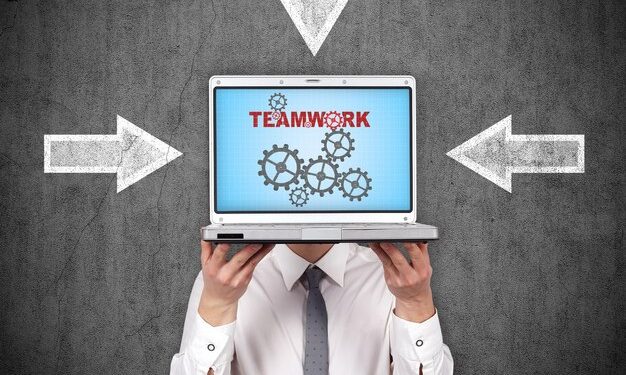When it comes to IT Service Management (ITSM), one term you’re bound to come across is ITIL. But what exactly is it? ITIL stands for the Information Technology Infrastructure Library, and it is a framework designed to standardize the selection, planning, delivery, and maintenance of IT services. ITIL helps businesses establish a stable IT environment that promotes growth, scalability, and efficiency.
The ITIL Lifecycle is essentially a step-by-step framework that guides IT organizations through the process of delivering services efficiently. Whether you’re a small business or a large enterprise, understanding the ITIL lifecycle is essential to optimizing your IT services. Each phase of the ITIL lifecycle builds on the other, ensuring seamless delivery and continual improvement of IT services.
So, why is ITIL so important? Well, having a framework in place like ITIL helps organizations reduce waste, streamline processes, and improve the overall quality of services provided to customers. It’s all about providing consistent, predictable services that align with your business goals. Ready to dive in? Let’s explore the ITIL lifecycle’s five key phases.
The Five Phases of the ITIL Lifecycle
The ITIL lifecycle is divided into five core stages, each playing a critical role in ensuring the efficiency and effectiveness of IT service management. From creating the service to improving it continually, each phase connects and relies on the others.
1. Service Strategy
Service strategy is the first phase of the ITIL lifecycle and is focused on understanding and defining what the business requires from its IT services. The goal is simple: align IT services with business objectives to maximize value.
Key processes in the service strategy phase include:
- Service Portfolio Management: Managing the service portfolio to ensure services are aligned with business needs.
- Demand Management: Identifying and understanding customer demands and patterns.
- Financial Management: Budgeting, accounting, and charging for IT services.
In a nutshell, service strategy ensures that IT services are not just created for the sake of it but are designed to provide real, tangible value to the business.
2. Service Design
Once the strategy is set, the next phase is service design. This is where the actual planning and design of the IT services take place. The design phase is about creating services that are not only functional but also efficient and future-proof.
Key elements of service design include:
- Capacity Management: Ensuring the IT infrastructure can support future growth.
- Availability Management: Making sure services are available when needed.
- Service Level Management: Defining and agreeing on service levels with customers.
Service design acts as the blueprint for building IT services that meet customer expectations and business goals.
3. Service Transition
The service transition phase focuses on building and deploying the services designed in the previous stage. This phase ensures that new or changed services are implemented smoothly and with minimal disruption.
Processes involved in this phase include:
- Change Management: Controlling the lifecycle of changes to minimize disruptions.
- Release and Deployment Management:Ensuring that releases are delivered in a timely and efficient manner.
In other words, service transition is all about moving services from the design stage into live operation with as little friction as possible.
4. Service Operation
This phase is where the rubber meets the road—service operation is all about keeping IT services running smoothly day-to-day. It focuses on delivering and managing IT services to meet agreed service levels.
Key processes in service operation include:
- Incident Management: Quickly restoring normal service after an issue arises.
- Problem Management: Identifying and eliminating the root cause of recurring issues.
- Event Management: Monitoring the IT infrastructure to detect potential issues before they become incidents.
The service operation phase is critical to ensuring that IT services deliver value consistently and without disruption.
5. Continual Service Improvement (CSI)
Last but not least is continual service improvement (CSI), a phase dedicated to evaluating and improving IT services. CSI ensures that services remain relevant and effective in meeting business objectives.
Key activities include:
- Process Evaluation: Regularly reviewing processes to identify inefficiencies.
- Performance Measurement: Using metrics and KPIs to assess the performance of IT services.
The CSI phase emphasizes that there’s always room for improvement, even in well-functioning systems.
How ITIL Lifecycle Benefits Your Business
Now that you understand the phases, let’s talk about how adopting the ITIL lifecycle benefits your business. First, it helps you deliver higher-quality IT services, which directly leads to improved customer satisfaction. Additionally, it enables better cost control by optimizing resources and processes.
Implementing the ITIL lifecycle ensures that your IT services are always aligned with your business goals, making it easier to adapt to changes and seize new opportunities. The results? A more agile, efficient, and competitive organization.
ITIL Lifecycle Best Practices
To get the most out of the ITIL lifecycle, consider these best practices:
- Collaboration: Ensure that IT and business teams communicate effectively to align goals.
- Clear Objectives: Establish clear, measurable goals for each phase of the lifecycle.
- Regular Reviews: Conduct frequent reviews of services to ensure they meet customer expectations and business needs.
By incorporating these best practices, you’ll maximize the effectiveness of your ITIL implementation.
Common Challenges in Implementing ITIL Lifecycle
Implementing ITIL can be challenging, especially for organizations unfamiliar with structured IT frameworks. Common challenges include:
- Resistance to Change: Employees may resist the adoption of new processes and workflows.
- Process Complexity: The ITIL framework can be complex and may require significant training.
- Misalignment: Misalignment between IT and business objectives can derail the implementation process.
However, these challenges can be mitigated with proper planning, clear communication, and ongoing training.
Conclusion
The ITIL lifecycle provides a comprehensive framework that helps organizations optimize their IT services, ensuring they deliver maximum value. From service strategy to continual improvement, each phase plays a crucial role in maintaining service quality and alignment with business goals.
If you’re looking to streamline your IT services and improve overall efficiency, understanding and implementing the ITIL lifecycle is a must. Want to know more? Check out this detailed guide on theITIL lifecycle for deeper insights.
FAQsz
- What does ITIL stand for?
ITIL stands for Information Technology Infrastructure Library. - How long does it take to implement ITIL?
It depends on the size and complexity of your organization, but implementation can take several months to a year. - Can small businesses benefit from ITIL?
Absolutely! ITIL helps small businesses optimize their IT services and reduce costs. - How does ITIL improve customer satisfaction?
By ensuring consistent service delivery and quick issue resolution, ITIL improves overall customer satisfaction. - What’s the difference between ITIL and other frameworks?
ITIL focuses on IT service management, whereas frameworks like COBIT focus on IT governance.


















